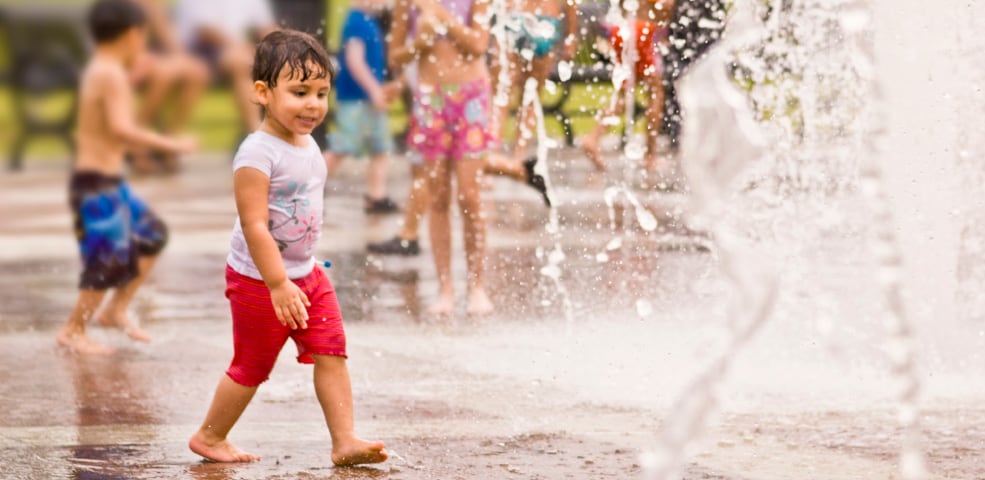Operation and Management of Splash Pads

Operators of splash pads should follow all applicable local, state, tribal, or territorial pool codes and can consult CDC’s Model Aquatic Health Code (MAHC). CDC’s MAHC has the following guidance for splash pad operation and management to help prevent the spread of germs, including Naegleria fowleri*, in water:
- Maintain adequate disinfectant level in the water:
- Minimum free available chlorine of 1.0 ppm (mg/L), if not using cyanuric acid (such as stand-alone cyanuric acid or stabilized chlorine, commonly known as “dichlor” or “trichlor”)
- Minimum free available chlorine of 2.0 ppm, if using cyanuric acid
- Minimum total bromine of 3.0 ppm
- Maintain pH 7.2–7.8.
- Conduct daily inspection before opening to the public:
- Ensure disinfection, secondary disinfection (such as UV and ozone), and recirculation systems and filters are operating
- Inspect for and remove biofilm on splash pad surfaces (such as the tank, spray nozzles, and drains) as required
- Test free available chlorine or total bromine and pH before opening to the public each day and maintain adequate disinfectant level.
- Test free available chlorine or total bromine and pH every 2–4 hours while open to the public and maintain adequate disinfectant level.
- Maintain water turnover times at 30 minutes or less.
- Ensure drains prevent standing water from collecting in the water play area.
- Inspect tank regularly.
- Clean tank, as needed.
- Document operation and management activities such as water testing results, response to testing results, and equipment maintenance (such as tank cleaning) and repairs.
- Ensure all staff who handle pool chemicals (such as chlorine, bromine, and acid) are trained in pool chemical safety.
- Test the backflow preventers regularly to ensure they prevent backflow, or back siphonage, into the water distribution system serving the splash pad.
Recommendations for Regulating Splash Pads
Environmental health programs can consult CDC’s MAHC to propose updates to their jurisdiction’s code to ensure the design, construction, operation, and management issues of splash pads are addressed in a way that prevents injury and illness. CDC has the following guidance to help prevent the spread of germs, including Naegleria fowleri* in water:
- Ensure during plan review of splash pads that the
- Water is from a potable water source or other source approved by the authority that has jurisdiction.
- Size, number, and location of the drains prevent standing water from collecting in the water play area.
- Slope prevents surface water from draining into the splash pad system during rain events.
- Inspect splash pads regularly to ensure code compliance.
- Educate operators about proper operation and management of splash pads and jurisdiction requirements.
*Naegleria fowleri infections—primary amebic meningoencephalitis (PAM)—linked to splashed water
Naegleria fowleri is commonly referred to as the “brain-eating ameba”.
- In 2021, a 3-year-old child died from PAM after playing in a splash pad. Texas public health officials found that the splash pad’s water was recirculated and not adequately disinfected.
- In 2020, a 6-year-old child died from PAM after playing in a decorative fountain. Although the decorative fountain was used as a splash pad by the public, Texas public health officials found that the chlorine level was not monitored, and chlorine was not added regularly or adequately to disinfect the water.

Decorative Fountains Entered by the Public
Decorative fountains are primarily designed to be part of landscape architecture. They are not designed or regulated for public entry but can look like and be mistaken for splash pads. If the public is entering a decorative fountain, it should be regulated, operated, and managed as a splash pad, or the public should be discouraged from entering (for example, with a barrier or signs).